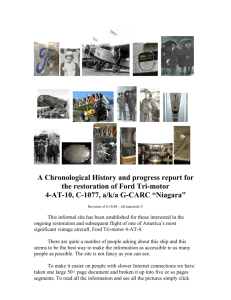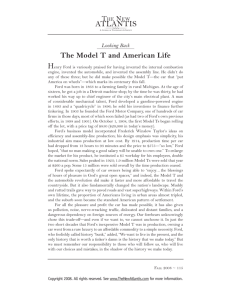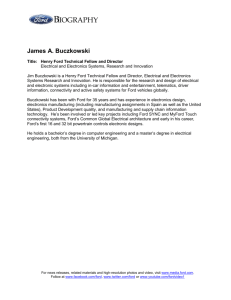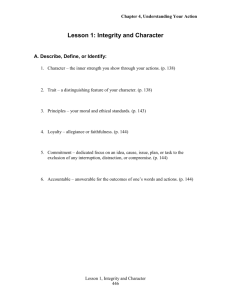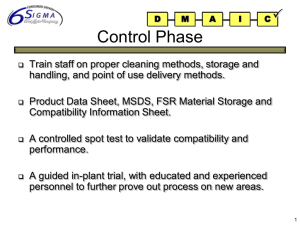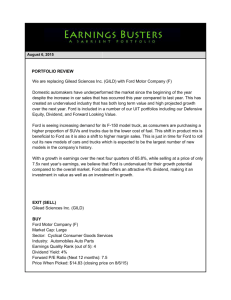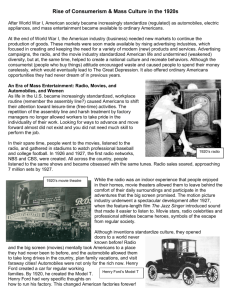Fordism: The Five Dollar Day and the Model T Ford
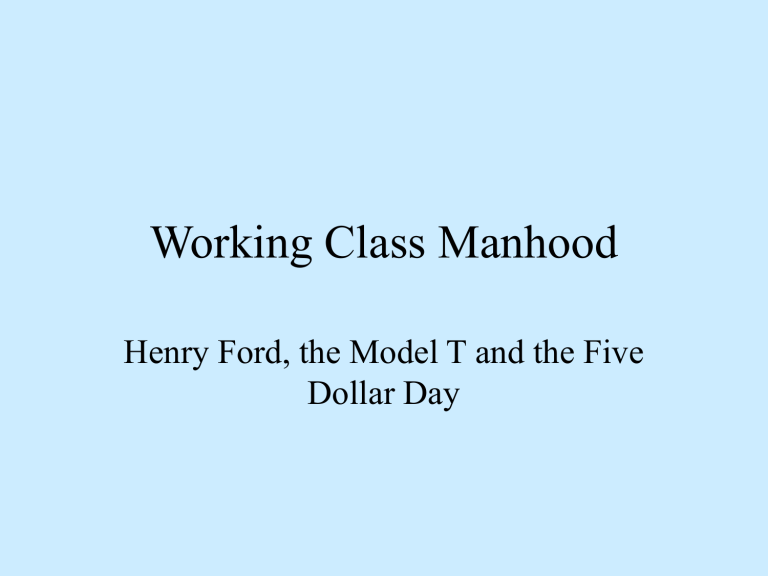
Working Class Manhood
Henry Ford, the Model T and the Five
Dollar Day
Fordism: The Five Dollar Day and the Model T Ford
• Henry Ford developed the Model T Ford,
“the motorcar for the great multitude” around 1908
• Standard Design, High Quality, Simple to operate
• By 1916, Ford controlled half of world auto production
• Demand required high volume production
The Model T: Motorcar for the
Great Multitude
Production Principles
• Used Frederick Taylor’s Method of
Scientific Management
• The factory was designed as an integrated system
• Work was standardized. Moving assembly line was copied from meatpacking industry
(which is a ‘disassembly line’)
• The ‘autoworker’ was created.
Assembling Cars before Ford
Ford’s Assembly Line: 1910
Ford’s Assembly Line
Assembly Line
Assembly
Line:
Joining
Engines to
Frames,
1914,
Highland
Park
Ford’s Highland Park Factory
Highland Park Plant
Kenilworth Building, UWM
The Workforce
Problems with the Human
Element of Production
• Taylor’s methods claimed higher rates of efficiency than Ford achieved.
• Ford discovered his “labor problems.”
– absenteeism: 10% a day
– high quit rate (300% turnover in 1913)
– soldiering and output restriction
– unionism
– immigrant culture
First Attempts at Labor Reform
• Creates an employment office
• Develops a wage classification system
• Institutes a savings and loan system for workers
• These reforms don’t achieve necessary improvements. So the alternative…...
Five Dollar Day: 1914
• Prevailing auto worker wage was $2.40 /day
• Ford promises $5.00/day if one ‘qualified.’
• How did one qualify? Through an investigation of one’s home life by the “Sociological Department.”
– Marriage proved
– “Good home conditions”
– Good personal habits
– Demonstrated thrift
– If single, must be age 22, for ‘profits’
Questions: paternalism .vs individual liberty
• Can one’s employer enforce living arrangements off the job?
• Can one’s employer demand alteration of religious practices?
• Can one’s employer demand particular family arrangements of workers?


